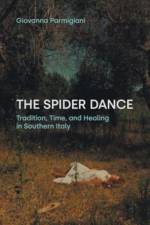- The Definitive Small Faces Biography
av Sean Egan
411
The Small Faces epitomised the maxim, "Never mind the width, feel the quality." In their brief original lifespan, they released just three official albums and a dozen-and-a-half authorised non-album singles and B-sides. Yet more than five decades after the London quartet's split the phenomenal quality of that compact body of work has ensured a continuing and unassailable musical esteem bordering on legend. Gut-bucket vocalist Steve Marriott brought a bluesy grit to both compositions of gravitas and effervescent pop numbers. Bassist Ronnie Lane collaborated with him to form one of the most formidable songwriting partnerships of the era. Ian McLagan was an exhilaratingly blurred-fingered keyboardist. Kenney Jones brought up the rear with blistering drum patterns, with his rolls often used to provide an explosive fanfare to Small Faces singles. Such a talent-oozing line-up was virtually predestined to conjure excellence. 'Tin Soldier', their exquisitely sophisticated psychedelic-soul release of 1967, regularly appears in polls to decide history's greatest singles. However, the band are just as much loved for rip-roaring power-pop like 'Sha-La-La La-Lee' and 'All or Nothing' and storming instrumental B-sides such as 'Grow Your Own' and 'Almost Grown'. Their acknowledged masterpiece is Ogdens' Nut Gone Flake (1968), an album that was not only artistically superb but groundbreaking in boasting a narrative song suite. The breadth of their talents helps explain why their catalogue is endlessly recycled and why their corpus has been disproportionately inspirational: the Small Faces were clear or acknowledged influences on David Bowie, Paul Weller, Quiet Riot, Blur, Oasis, Ocean Colour Scene and even Led Zeppelin. Long Agos and Worlds Apart covers the Small Faces' full, tumultuous story. It explores the group's 1965 formation, their Sixties glory years, the redistribution of the band members at the turn of the Seventies into Humble Pie and the Faces, the ill-fated but grimly fascinating Small Faces reunion of the late Seventies, and the little-known but worthy 1981 Small-Faces-in-all-but-name project the Majik Mijits. A closing section brings the story up to date. The book draws on lengthy new interviews, including ones with Kenney Jones, Lane's close friend Pete Townshend and original Small Faces member Jimmy Winston. It features contributions from many associates and intimates, including managers, agents, publicists, songwriters, auxiliary musicians, fan-club personnel, recording engineers, journalists, friends and wives. It also draws on numerous interviews the author conducted down the years with both Jones and McLagan, much of which material is previously unpublished. A revealing, impartial, exhaustive and definitive account, Longs Agos and Worlds Apart lays to rest several myths about the Small Faces while at the same time seeking to redress the lack of credit accorded a truly great band

















